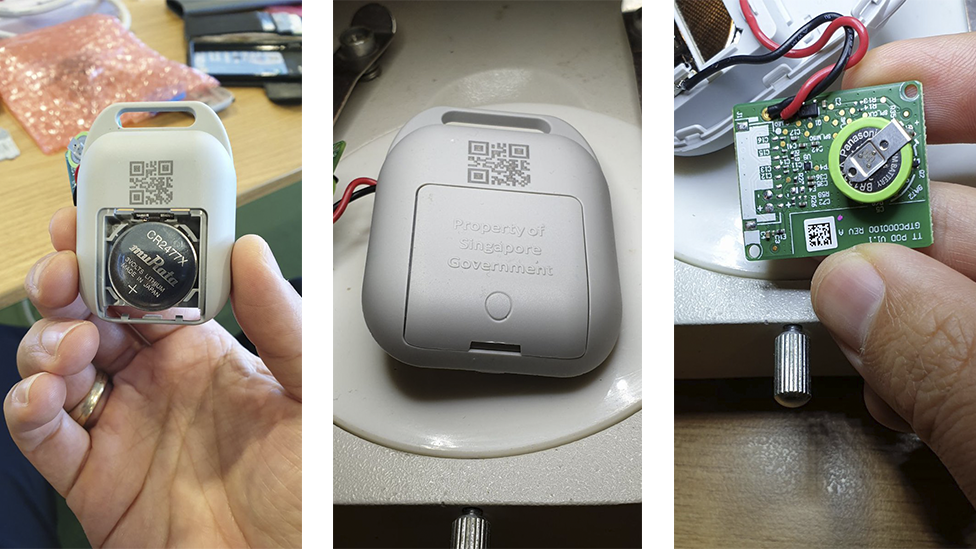Covid-19 Singapore: A ‘pandemic of inequality’ exposed
- Published

Zakir Hossain Khokan has just about had enough.
It's been weeks since he was last allowed out of the room he shares with 11 others.
The room is bare, except for six metal-framed bunk beds. Clothes and the odd towel hang in front of the beds, providing some semblance of privacy.
"Day and night, we are just inside one room," he says. "It's actually torturing our mind. It's like jail."
"Then we can't social distance because there's no space."
Having already caught Covid-19, recovered, and gone back to work, Zakir thought his worst days were behind him. His dormitory was declared cleared of the virus in June.
But last month a new cluster developed at the dorm, and like thousands of migrant workers, he was ordered back into quarantine.
Once lauded for its containment of the virus, Singapore's success crumbled when the virus reached its many foreign worker dormitories, something activists say should have been seen coming a mile off.
Now months on, Singapore is reporting single figure daily cases in the local community. People are going back to work, cinemas have reopened and laughter can be heard coming out of restaurants again.
But many of Singapore's lowest earners remain indoors, facing uncertainty.
The men who built the city
Singapore saw its first imported virus cases in late January - weeks later, it had more than 100 cases.
A huge contact tracing programme began and a national coronavirus-tracing app was rolled out. Public cautions were increased and clearly communicated. Harvard epidemiologists called Singapore's system the "gold standard of near perfect detection".
But there was a crisis building, unseen by most of the population.
Singapore is home to more than 300,000 low-wage foreign workers from countries like India and Bangladesh, who mainly work in industries like construction and manufacturing.
Their right to live in Singapore is tied to their job and their employer must provide accommodation, at a cost. They commute from their dorms in packed vans to building sites where they work and take breaks alongside men from other crowded dorms - perfect conditions for the virus to spread.
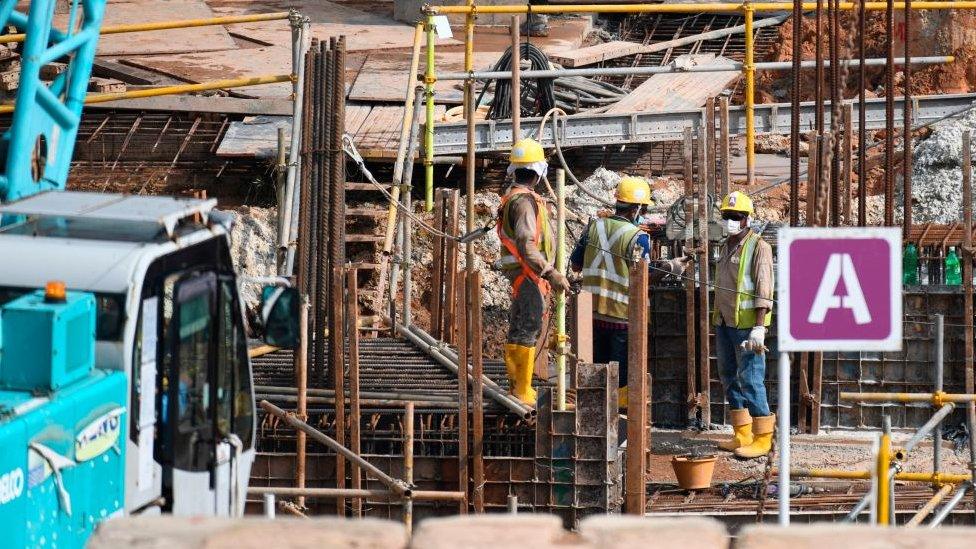
Singapore's foreign workers often work in labour-intensive industries
With no legal maximum occupancy rules, in pre-Covid times it was normal for up to 20 men to share a room in a dorm.
In late March, migrant rights group Transient Workers Count Too (TWC2) warned that the "risk of a new cluster among this group remains undeniable".
Weeks after a partial national lockdown largely brought the situation among the general public under control, the activists' predictions came true. Hundreds of new migrant worker cases were being discovered each day.
Since mid-April, the government has released two distinct daily figures - the cases amongst the local community and the cases in the dormitories.
The statistics show the stark contrast between the high number of cases in the dorms and the number of cases in the community, which are so low they barely register in the graph below.
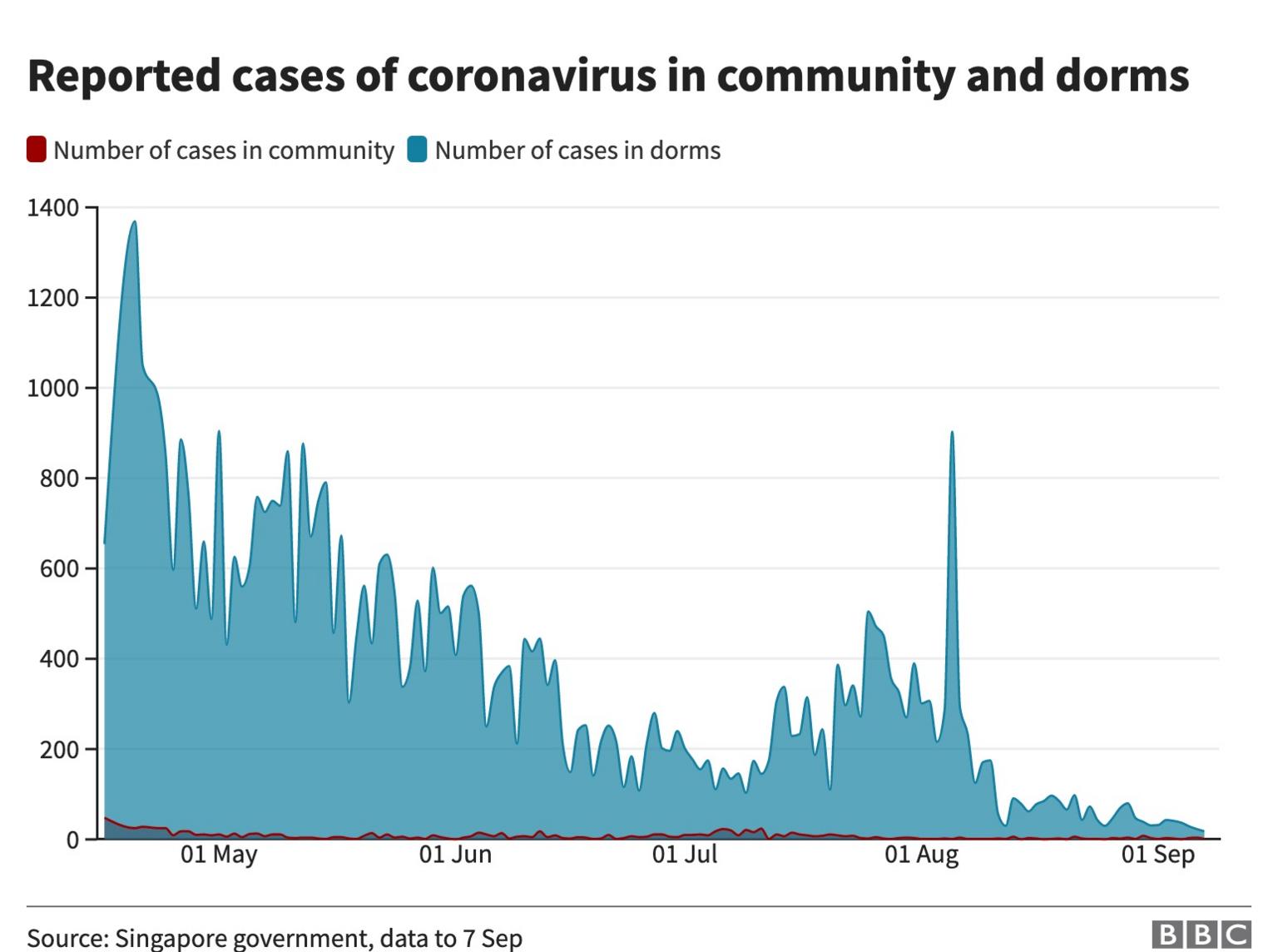

"Covid-19, much like any other pandemic, is a pandemic of inequality," Mohan Dutta, professor of Communication at Massey University, told the BBC.
"How we communicate it - like the idea of reporting two different numbers in Singapore… [these] make the inequalities even more evident. One might even go so far as to say its [an example of] 'othering'."
Locked in
The authorities decided that the dormitories would have to be sealed off.
Around 10,000 healthy migrant workers in essential services were taken out to other accommodation - a skeleton staff to keep the country running.
But the majority were trapped in the dorms - some not even allowed to leave their rooms - while mass testing was carried out. Infected workers were gradually removed, isolated and treated.
It was a remarkably different experience to the lockdown the rest of the country was going through, with shopping allowed, daily exercise encouraged and every type of outlet offering delivery. These people were well and truly locked down, with only basic meals delivered to them.
"Once the lockdown was in place, we were not allowed to come out of the room. We were not allowed to go next door too," Vaithyanathan Raja, from southern India, told the BBC.

A typical curry meal provided to a migrant worker
The turn of events forced many in Singapore to confront the living conditions of many of these migrant workers - the sudden attention, coupled with new hygiene measures, saw a surge of charitable collections, and many dorm operators working to improve conditions.
Mahalingam Vetriselvan, a 51-year-old worker from India, says facilities in his dorm had been ok, but that tightly packed bunks have now been replaced with single beds, placed at a "good amount of distance".
Another foreign worker sent similar pictures of his dorm being re-arranged, and said the number of beds had gone from 15 to eight.
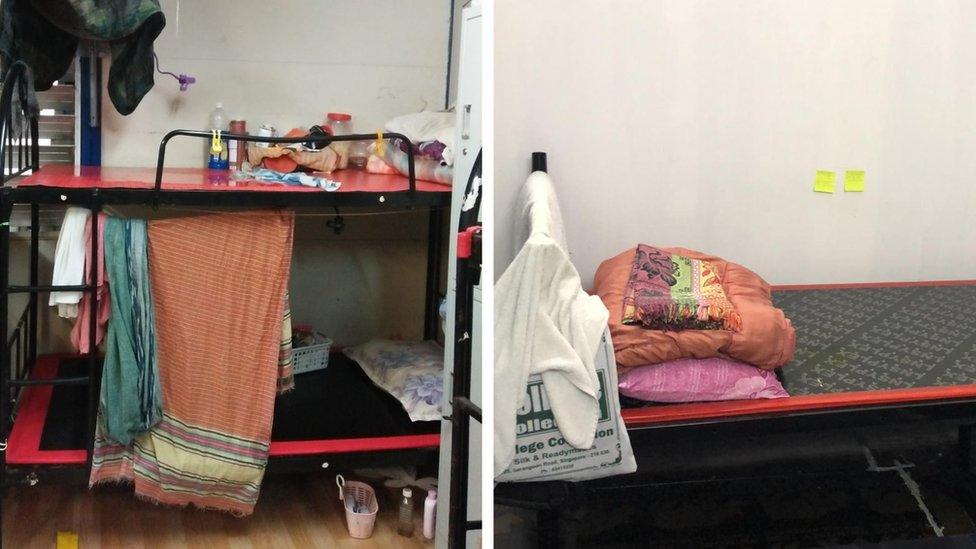
One migrant worker said his beds were changed from a double decker (L) to a single bed (R)
Another worker told the BBC he was lucky to be moved into a hotel by his employer.
But this wasn't the case for Zakir, who comes from Bangladesh and works as a project co-ordinator in construction.
After being hospitalised with Covid-19, he recuperated in temporary accommodation before finally being taken back to his dorm.
"I left the dormitory on 17 April, and when I came back on 9 July, I didn't see any improvements," he said.
According to Zakir, his room - which measures around 6m by 7m - is shared by up to 12 men.
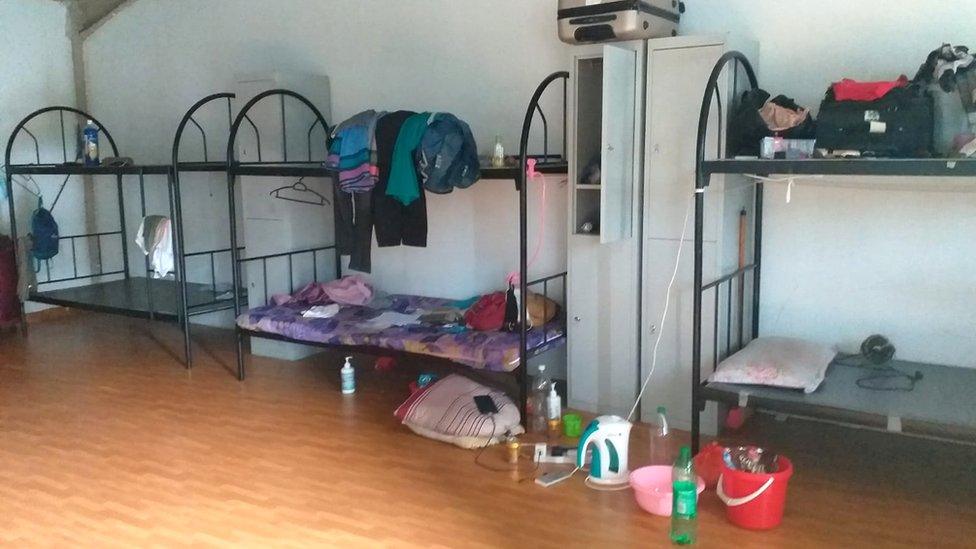
Picture of a dormitory bedroom
"They say we should social distance, but to us, that's a joke you know," said Zakir.
"How do we have space to distance inside the small room?"
Each floor is home to 15 such rooms - or up to 180 men assuming each room is fully filled. They share one toilet facility, with six basins, shower cubicles, toilets and urinals, says Zakir.
Government guidelines state there should be 15 beds to one toilet, shower and sink.
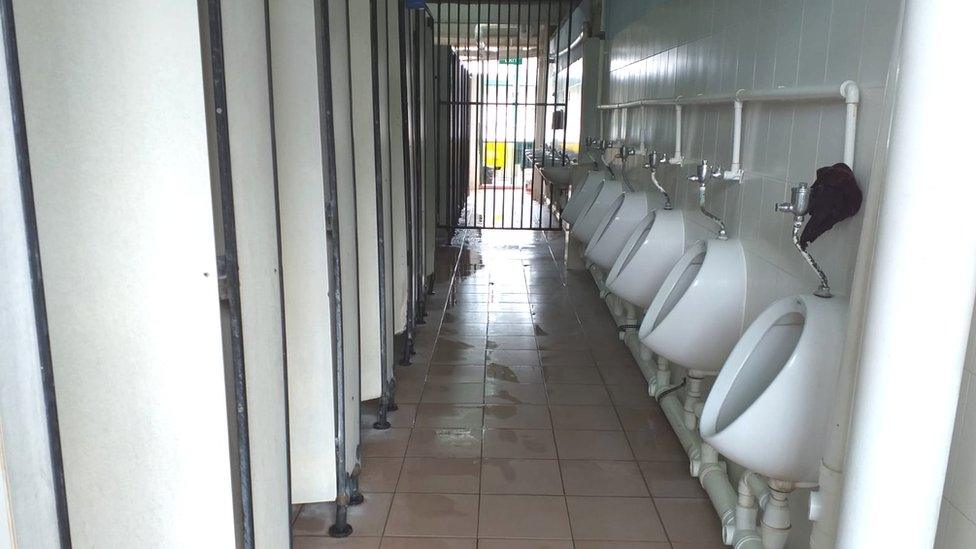
This is one half of the bathroom that is shared by up to 180 men
"They ask us to keep clean but inside the soap dispenser there's no soap," said Zakir.
The BBC has reached out to the dormitory operator for comment but has not heard back.
According to Dipa Swaminathan, the founder of migrant rights group Its Raining Raincoats, such conditions have long been the norm for many workers.
"The things we're talking about now - their dorms, their food - these things have been around for years," she told BBC News.
"The reason why we don't hear about it is because they're not the complaining kind. They have a deep sense of gratitude for what they have here [in Singapore]. If they do feel any level of stress, they've really reached a breaking point."
There are grim stories of the strain the pandemic has put on the workers. There were several reports of attempted suicides, deaths or self harm. , external
One widely circulated video - which could not be independently verified - showed a worker standing at what appeared to be a window ledge of a dormitory - before being pulled in by his flatmates.
"I see some people from my dormitory, they call their family and say they cannot take the situation," said Zakir, who himself runs a charity for migrant workers.
"They cry and say they want to go home."
Salary issues also contribute to some of this mental stress, with families at home relying on the workers' wages.
"We can't send money because we can't go outside," said Zakir, who adds that some others have not been paid their usual salary.
The Ministry of Manpower told the BBC that all foreign workers who work full-time must be paid their prevailing salaries, but that for those who could not work, it would be "unrealistic to impose a uniform requirement across all employers".
Instead, employers should "engage and mutually agree... on appropriate salary arrangements".
A post-mortem
Singapore has since pledged to further improve conditions for migrant workers , external- the government says that by the end of 2020, each resident will be given a living space of at least 6sqm/person.
Each room can be allocated a maximum of 10 beds - all of which have to be spaced out by at least 1m.
The question now being asked is how the situation was allowed to get so bad in the dorms when, as Prof Dutta said, "many organisations already pointed to basic problems before the pandemic hit".
Prime Minister Lee Hsien Loong has admitted that the government's response to the threat to dorms was "not without shortcomings" but that "communal living in any form poses risks".
"We stepped up precautions. For a time, these seemed adequate. But then bigger clusters broke out in the dorms, which threatened to overwhelm us," he said in an address to parliament earlier this month, shortly after winning an election in which the migrant issue was only a minor talking point.
Though he conceded that missteps were taken, he ended by saying: "In the fog of war, it is not possible always to make the perfect decisions."
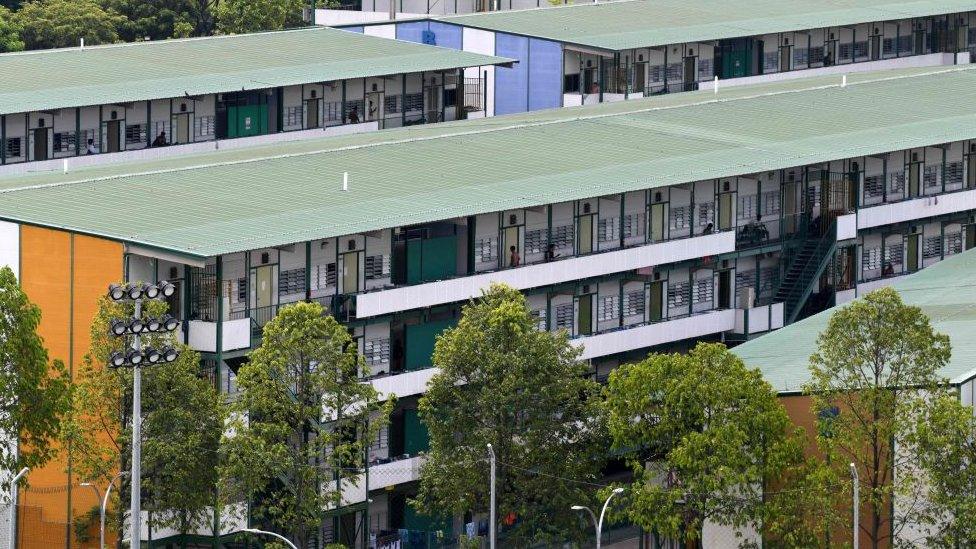
A dormitory located on the outskirts of Singapore
Last month, the government declared that all workers living in dormitories had recovered or were tested to be Covid-19 free.
But just weeks later - new virus clusters have emerged in a handful of dormitories again.
Zakir doesn't know when he will be released. His greatest hope now he says, is to just be able to go back to work, and for things to improve for migrant workers in Singapore.
"Many of us have spent a long time here. For me, I have been here 17 years - it's like we are already part of Singapore," he said.
"We are not asking to be treated like a citizen. Just treat us like you would treat a human being - like we are a part of society. If it could be like that, that would be very nice."
Additional reporting by Krithiika Kannan, graphics by South Asia Visual Journalism
- Published22 April 2020
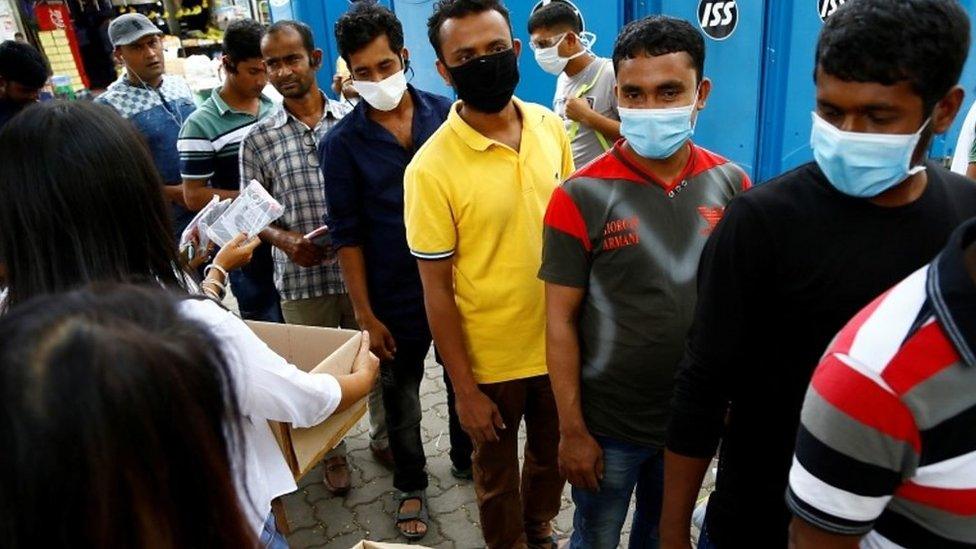
- Published17 April 2020
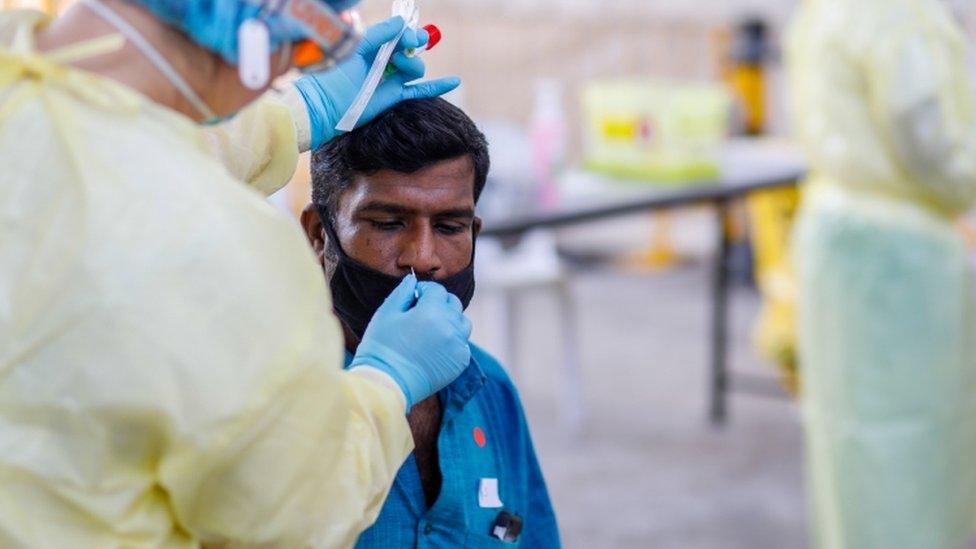
- Published19 March 2020
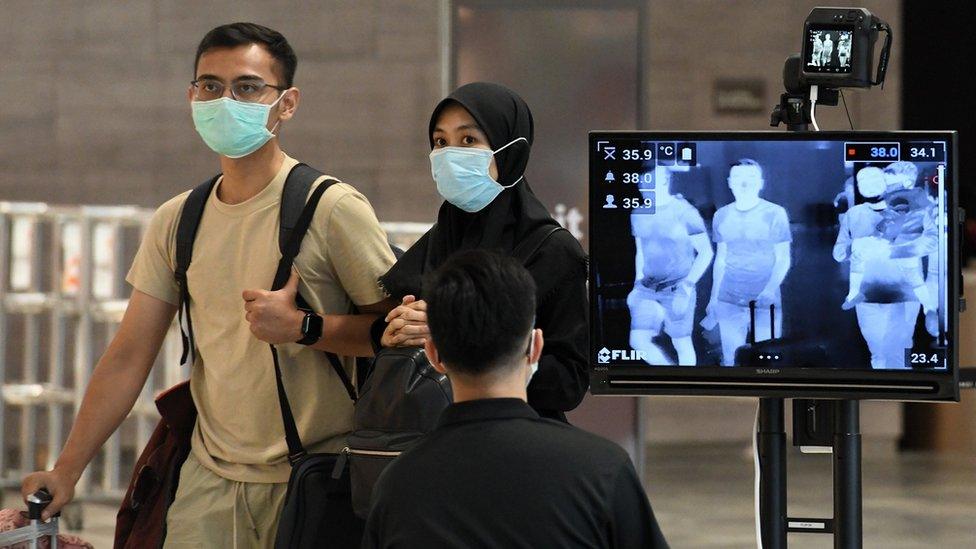
- Published10 April 2020
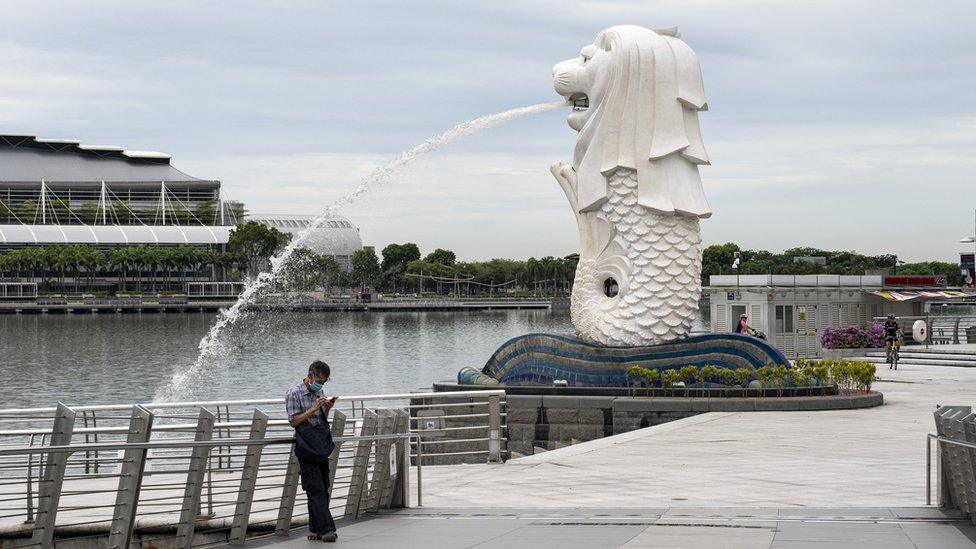
- Published5 July 2020
